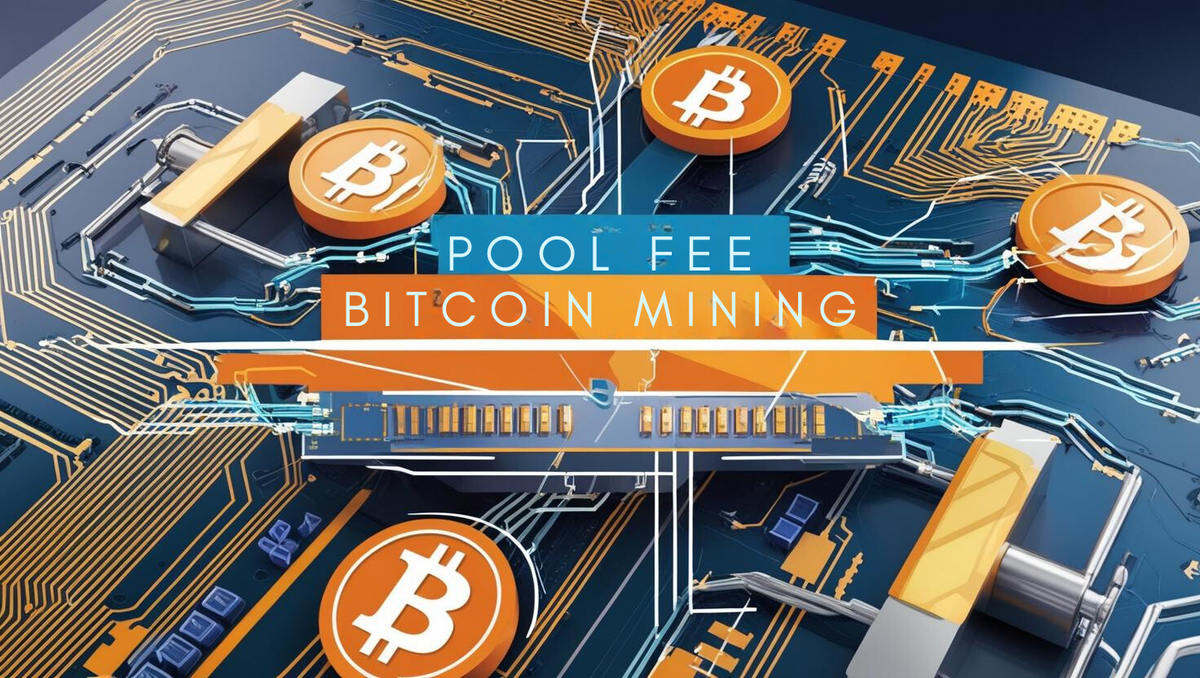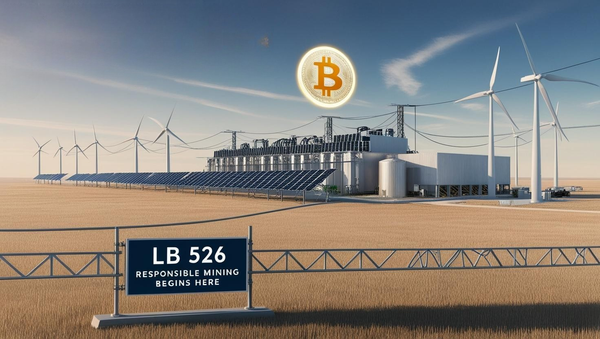Understanding Pool Fees in Bitcoin Mining: A Deep Dive

Introduction
When choosing a Bitcoin mining pool, one of the most critical factors to consider is the pool fee. Pool fees directly impact your profitability as a miner, as they represent a portion of your earnings that the pool operator takes as compensation for providing the service. While it may be tempting to gravitate towards pools with the lowest fees, it's essential to understand the nuances behind these fees and how they align with the overall service quality, reliability, and payout consistency of the pool. This article offers a comprehensive exploration of pool fees, including what they cover, how they vary, and their implications for your mining profitability.
What Are Pool Fees?
Pool fees are the charges imposed by mining pool operators on miners for participating in the pool. These fees are typically a percentage of the rewards earned from mining blocks. The fee is deducted before the rewards are distributed among the miners based on their contributed hashrate. Pool fees are essential for covering the costs associated with running and maintaining the mining pool, including server costs, software development, network security, and customer support.
Types of Pool Fee Structures
- Fixed Percentage Fee
- Overview: The most common type of pool fee is a fixed percentage deducted from the block reward before distribution. This percentage usually ranges from 1% to 3% of the total rewards.
- How It Works: For example, if a mining pool has a 2% fee and the block reward is 6.25 BTC, the pool would take 0.125 BTC as a fee, leaving 6.125 BTC to be distributed among the contributing miners.
- Pros: Simple and predictable; easy to calculate the impact on your earnings.
- Cons: Even a small percentage can significantly reduce earnings over time, especially for miners with large contributions.
- Pay-Per-Share (PPS) Fees
- Overview: In a PPS model, the pool operator assumes all the risk by paying miners a fixed amount for each share submitted, regardless of whether the pool successfully mines a block. Due to this guaranteed payout, PPS pools typically charge higher fees, often ranging between 3% and 5%.
- How It Works: The fee is deducted from the fixed payout you receive for each share. For example, if the PPS rate is 0.0001 BTC per share and the pool fee is 4%, you would receive 0.000096 BTC per share.
- Pros: Provides a stable and predictable income; ideal for miners who prefer consistency.
- Cons: Higher fees compared to other payout methods; potential to earn less than with other models if the pool consistently finds blocks.
- Pay-Per-Last-N-Shares (PPLNS) Fees
- Overview: PPLNS is a performance-based fee structure where miners are only paid for shares submitted during a specific window leading up to the successful mining of a block. PPLNS fees are generally lower, often between 0% and 2%.
- How It Works: The fee is deducted from the total reward distributed to miners based on their share contributions within the relevant window. For instance, if a pool has a 1.5% fee and your contribution was significant during the block window, the pool would deduct this percentage from your earnings.
- Pros: Lower fees compared to PPS; potential for higher earnings if the pool has a good block-finding streak.
- Cons: Payouts are less predictable and can vary significantly based on luck and timing.
- Full Pay-Per-Share (FPPS) Fees
- Overview: FPPS is an enhanced version of the PPS model that includes transaction fees from the block in addition to the block reward. The fee structure is similar to PPS, but because the rewards are higher, the fees are also slightly higher, typically around 4% to 6%.
- How It Works: The fee is deducted from the total payout, including both the block reward and transaction fees. If the FPPS rate is 0.00012 BTC per share and the fee is 5%, your payout per share would be 0.000114 BTC.
- Pros: More substantial payouts due to inclusion of transaction fees; still offers stable and predictable income.
- Cons: Higher fees, and may not be as profitable if transaction fees are low.
- No-Fee Pools
- Overview: Some mining pools advertise a "no fee" model, appealing to miners who want to maximize their earnings. However, it’s essential to approach these pools with caution.
- How It Works: These pools may claim to charge no fees, but they might monetize their services in other ways, such as retaining a portion of transaction fees, implementing hidden fees, or offering lower payouts for shares.
- Pros: On paper, all of your earnings go directly to you, maximizing the potential reward.
- Cons: The pool may lack the resources to maintain high uptime, reliable payouts, or strong customer support. Hidden fees or indirect charges might still apply.
What Do Pool Fees Cover?
- Infrastructure and Server Costs
- Running a mining pool requires a robust infrastructure to handle the significant amounts of data involved in mining. This includes high-performance servers, bandwidth, and security measures to protect against Distributed Denial of Service (DDoS) attacks. Pool fees contribute to maintaining this infrastructure, ensuring reliable operation and minimizing downtime.
- Software Development and Maintenance
- Pool operators continuously develop and update the software that manages the mining operations. This includes optimizing the mining algorithms, integrating with new blockchain technologies, and ensuring compatibility with various mining hardware. Fees help fund these ongoing development efforts, keeping the pool competitive and efficient.
- Network Security
- Security is paramount in mining, as pools are prime targets for cyberattacks. Pool fees support the implementation of security protocols, such as DDoS protection, SSL encryption, and regular security audits, to protect miners' contributions and rewards.
- Customer Support
- Quality customer support is essential for resolving issues related to mining payouts, connection problems, and account management. Pool fees help cover the costs of maintaining a knowledgeable support team that can assist miners with any issues they encounter.
- Payout Processing
- Managing payouts, especially in a large pool, requires significant resources. Pool fees cover the administrative costs associated with accurately calculating and distributing rewards to miners. This includes managing payout thresholds, transaction fees, and ensuring that miners receive their rewards in a timely manner.
Balancing Fees with Pool Quality
While it might be tempting to select a pool with the lowest fees, it's crucial to consider the overall value provided by the pool. Pools with slightly higher fees often offer better infrastructure, faster payouts, more reliable uptime, and superior customer support. These factors can contribute to more consistent earnings and a smoother mining experience, which may offset the cost of higher fees.
Calculating the Impact of Pool Fees on Earnings
To fully understand the impact of pool fees on your earnings, consider the following steps:
- Estimate Expected Earnings:
- Calculate your expected earnings by multiplying your hashrate by the pool’s average rewards per terahash or gigahash, depending on your mining hardware.
- Deduct Pool Fees:
- Subtract the pool fee percentage from your expected earnings. For example, if you expect to earn 0.01 BTC in a day and the pool charges a 2% fee, your earnings after fees would be 0.0098 BTC.
- Factor in Additional Costs:
- Consider other costs associated with mining, such as electricity, hardware maintenance, and cooling. Subtract these costs from your post-fee earnings to determine your net profit.
- Compare Pools:
- Use this calculation to compare different pools. A pool with higher fees might still be more profitable if it offers better block-finding consistency or additional features like FPPS or merged mining.
Conclusion
Pool fees are a fundamental aspect of participating in a Bitcoin mining pool, directly influencing your overall profitability. While lower fees might seem more attractive at first glance, they don’t always translate to higher net earnings. It’s essential to consider what you’re getting in return for the fees—whether it’s better infrastructure, enhanced security, more reliable payouts, or superior customer support. By carefully evaluating pool fees in conjunction with other factors like payout structure, pool hashrate, and server distribution, you can choose a mining pool that offers the best balance of cost and quality, ultimately maximizing your Bitcoin mining profits.
This article presented by Loka Mining.
Loka is revolutionizing the Bitcoin mining ecosystem by directly connecting investors with Bitcoin miners through a decentralized mining pool and an upcoming permissionless forward hashrate marketplace protocol.
Loka enables investors to get Bitcoin at lower than market price without centralized & counter-party risks, and Bitcoin miners to access capital efficient financing and hedge their risk exposure by selling their future mining rewards.
Find out more about loka in https://lokamining.com — or access our mining pool aggregator on https://pool.lokamining.com





